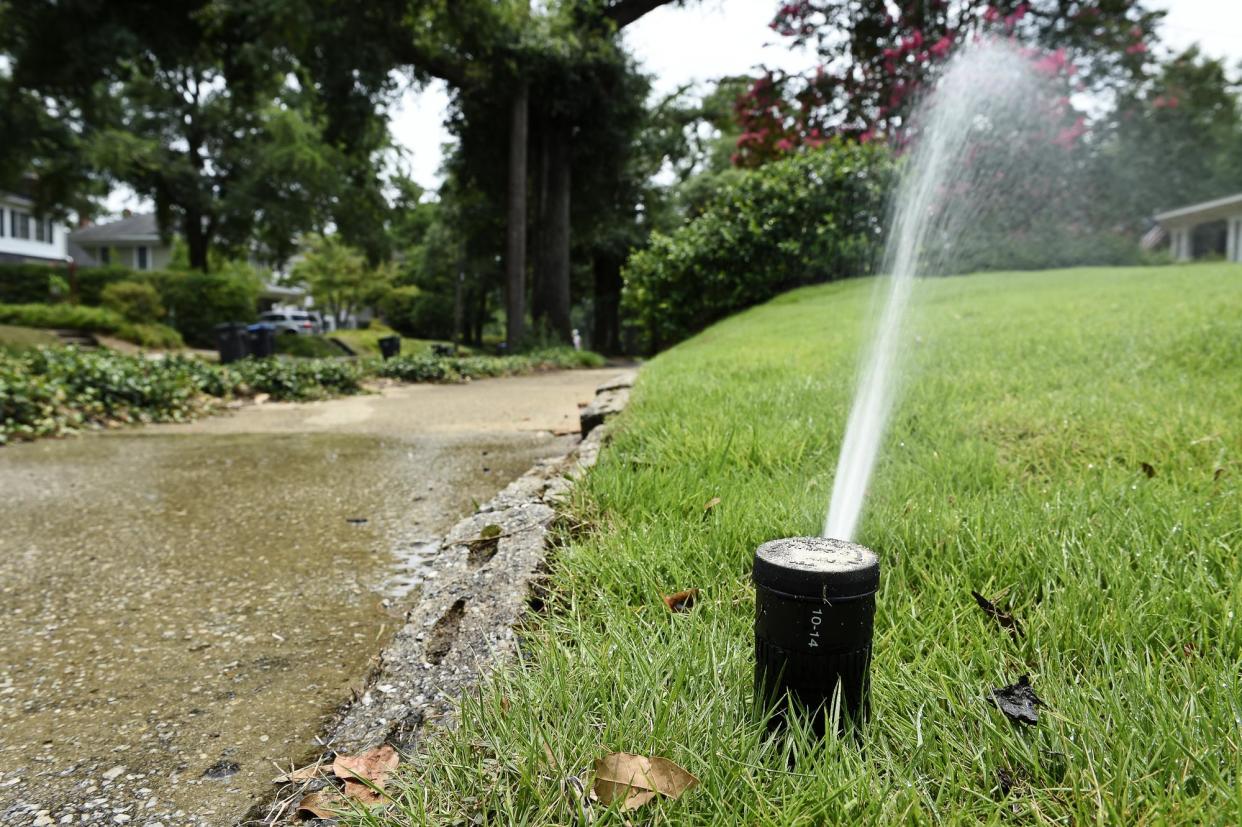In extreme heat, how much should you water your lawn? The answer requires math.

The heat has lasted. Hot would be an understatement. I am getting this daily question. “With this kind of heat, how much do I need to water? Is 30 minutes OK?” My standard answer is: “Let’s take a step back and go through this process together.”
In other words, I am going to give you the long version of the answer because my job is to educate, not guess. There are so many variables to consider before deciding how long to run your irrigation system. Irrigation is math with a little science mixed in.
Sprinkler rotor heads vary
Let’s first talk about the math portion of irrigation. There are all kinds of irrigation heads that emit water in all directions and at different rates. For this column, we are going to talk about rotor head irrigation. These are the standard irrigation heads that are most likely seen in your lawn. You click the “RUN” button on the controller and these things pop up from the ground and start shooting a long arching stream of water about 30 feet. These rotor heads start to slowly move one direction and then at a set spot, they turn the other direction.

Rotor heads come standard with a 3 gallon-per-minute water flow. Here is where it gets tricky. We are under the assumption that you are getting 3 gallons per minute, but these heads will take GPM rate nozzles of 1 GPM up to 8 GPM. One head could potentially be putting out 8 times as much water than another.
Remember that the head rotates, so sometimes they go 90 degrees, 180 degrees or even spin a whole 360 degrees. In the same amount of time, the rotor head that is watering at 90 degrees is applying four times as much water to that area than the head that is applying a full circle. Really good irrigation design helps prevent some of these type discrepancies in volume of application, but it isn’t fool proof.
It's getting hot! Cool off at these splash pads and pools this summer
Also: How to handle the heat, know the signs of heat illnesses among tips during heat wave
Factor in shade versus sun
The science part of irrigation takes into consideration how much shade/sun the area gets. Sunnier areas are hotter and evaporate water faster so they usually need more water. Sandy soils don’t hold moisture as long as clay soils do, but clay soils need slow application of water to infiltrate. Compacted soils don’t take water as well as loose soils. Zoysia grass needs more water than Tif Tuf Bermuda. A three-year-old pecan tree will drink 10 gallons of water a day in August, but a 25-year-old pecan will drink 300 gallons of water a day. Hydrangeas need more moisture than camellias. Watering in the morning keeps evaporation at a minimum so water can get to where it needs to be: in the ground. I can probably come up with 400 other factors to consider in deciding how much you need to irrigate.
MoreCampbell Vaughn: In this excessive heat, drought-tolerant plants will wilt, healthy plants may die
Fertilizing, mowing, watering: Here's when to do them all to make your Georgia grass grow
In saying all this, I really can’t tell you how long to run your irrigation system, but I have a fool proof trick that will help you figure that number out … plastic containers.
Get an old, beat-up plastic dish with 3-inch sides that doesn’t leak and put it right in the middle of your lawn or in whichever area looks like it needs the most water. Turn your irrigation on and see how much water you get in that container in your normal watering cycle. If it isn’t ¾ inch of water, then increase your time. If it is over ¾ inch of water, decrease your time.
This time of year, if you water twice a week to equal 1.5 inches of water total that should be good. If it rains ¾ of an inch one evening, then turn the controller back to one day that week. Don’t be afraid to use a shovel to see how much moisture is actually in the soil from the surface to 6 inches in depth. With 104 degrees, it would be fine to irrigate one more time a day if you need to replenish moisture levels.
To stay cool, you also may want to take a lawn chair and sit by that plastic container to watch it fill up.
Reach Campbell Vaughn, the UGA Agriculture and Natural Resource agent for Richmond County, by e-mailing augusta@uga.edu.
This article originally appeared on Augusta Chronicle: Campbell Vaughn: In extreme heat, how much should you water your lawn?

